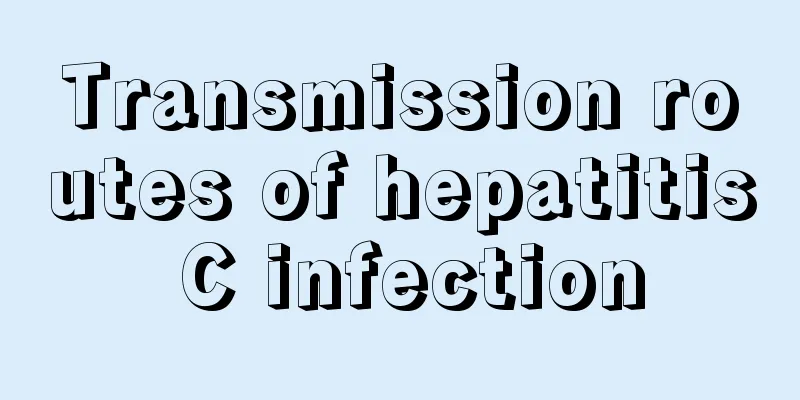Transmission routes of hepatitis C infection

|
Hepatitis C is also a common type of viral hepatitis. It can cause great damage to the liver and is also highly contagious. Generally, there are three ways of transmission of hepatitis C: blood transmission, mother-to-child transmission, and non-blood transfusion transmission. If you want to prevent this disease, you should know more about how it is spread. There is no doubt that hepatitis C is contagious, and hepatitis B and hepatitis C can cause overlapping infections, aggravating the symptoms of hepatitis. In recent years, the incidence of hepatitis C has been increasing year by year. Last year, 120,000 cases were reported, which is six times that of 2003. It can be seen that hepatitis C is highly contagious. In fact, as long as we understand the transmission routes of hepatitis C, the prevention problem can be solved. Generally speaking, there are three ways of transmission of hepatitis C: transmission through blood transfusion and blood products, transmission without blood transfusion, and mother-to-child transmission. However, the hepatitis C virus is mainly transmitted through the blood, and the possibility of infection through general contact in daily life is very small, and there are not many cases of mutual infection between family members. If you pay attention to the following points, you may be able to avoid the spread of hepatitis C within the family. ① Never use the patient's blood to transfuse to others, and patients cannot donate blood voluntarily; ② The patient should use disposable syringes for injections, which should be burned after use. Family members should not share syringes, acupuncture needles, etc.; ③ If the patient is a drug addict (especially one who injects drugs), he should be sent to a drug rehabilitation center for complete drug rehabilitation; ④ Strictly prevent the patient's bleeding from contaminating the exposed wounds or hidden injuries of the skin and mucous membranes of healthy people. The patient's menstrual, epistaxis, hemorrhoidal bleeding and other blood must be thoroughly processed and all pollutants destroyed; ⑤ Be careful of the patient's inapparent blood transmission, such as not sharing toothbrushes and tooth cups, and avoiding gum bleeding and infection; |
<<: Can hepatitis C be completely cured? How to treat it
>>: What should I do if I have diarrhea due to poor stomach? How can I solve it?
Recommend
How can an introvert become an extrovert and get to know yourself in time
Introverts usually talk very little. They cannot ...
How to increase metabolism
Each of us has to metabolize every day. Metabolis...
Is alum effective in treating athlete's foot?
Faced with the problem of athlete's foot, man...
How to choose antibacterial drugs in the treatment of osteosarcoma
Osteosarcoma brings great pain to patients. Since...
Early symptoms of pituitary tumor
In the early stages of a pituitary tumor, symptom...
Where is the jaw
There are many bones in our body. The main compon...
What to do to prevent skin cancer from recurring
After treatment, most skin cancer patients are ve...
What should you do if you have symptoms of pre-marital phobia
Marriage is sacred and great, and it is also a ne...
Will eating only rice make you fat?
The biggest rumor about weight loss is that rice ...
Can lung cancer be transmitted to others? Introduction to the infectiousness of lung cancer
Lung cancer is a common disease in our daily life...
Laser treatment for spider nevus
Spider nevi are very different from ordinary blac...
How to protect gum recession?
If you do not pay attention to oral hygiene, the ...
What are the key points in diagnosing skin cancer?
Skin cancer often occurs on exposed parts of the ...
What is the matter with eye discomfort? Causes of eye discomfort
When the eyes are overworked, it can cause eye so...
Why does my back hurt and my legs hurt at the same time?
Many diseases have different symptoms, and some d...









